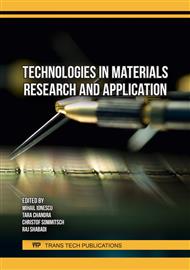p.45
p.51
p.57
p.65
p.73
p.81
p.87
p.95
p.103
Development of a Thermal Cycler for a Low-Cost Real-Time PCR Application
Abstract:
With the COVID 19 pandemic and the rise of polymerase chain reaction (PCR) testing in its wake, affordable large-scale testing became necessary. A thermal cycler for PCR has been developed that is affordable, fast, and accurate. The thermocycler must follow a specific temperature profile consisting of three different temperature levels. To ensure the success of any PCR, the tempering elements must accurately follow the tempering profile and be stable heat sources to maintain any given temperature. A control mechanism is required to approximate this prescribed temperature behavior. The basis for this is a Proportional-Integral-Differential (PID) controller, whose functionality is ensured by a feedback mechanism consisting of a temperature sensor. The PID controller provides precise attainment and maintenance of the temperature levels. A high performance Peltier element is used to heat and cool the PCR system. This is controlled by a programmable power supply and, in combination with a heat dissipation system, achieves heating and cooling powers in excess of 200 W. In addition, different design variants of the thermal cycler were created and their temperature behavior was simulated. These were then implemented, tested and the PID controller tuned accordingly. These tests help to find the best design for the thermal cycler with the optimal heat distribution.
Info:
Periodical:
Pages:
73-79
Citation:
Online since:
December 2023
Keywords:
Price:
Сopyright:
© 2023 Trans Tech Publications Ltd. All Rights Reserved
Share:
Citation:



